Search the Special Collections and Archives Portal
Search Results
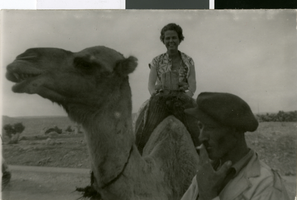
Photograph of Velma Bradley on a camel, Mersin, Turkey, October 2, 1900
Date
1900-10-02
Description
Written on back of photograph: "Taken October 2, 1900 in the Mediterranean cost near Mersin, Turkey - Looks like I have jeans on. That is the camel saddle. I have on a dress. Notice the bell on the saddle in the front of me. The Turk happens to be a modern one. Velma [Bradley?]"
Image
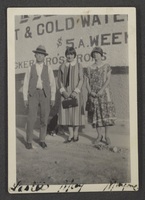
Photograph of Lester, Mayme and Mae Pickett Stocker, Las Vegas, October 1925
Date
1925-10
Archival Collection
Description
Lester Stocker, Mayme Stocker, and Mae Pickett Stocker in Las Vegas, Nevada.
Image

Photograph of women in an automobile, circa early 1900s
Date
1905 to 1919
Archival Collection
Description
A group of women inside of a truck, possibly near Las Vegas.
Image
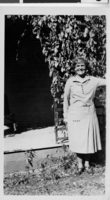
Photograph of Emily Ball, circa mid 1900s
Date
1930 to 1969
Archival Collection
Description
Emily Ball. Date and location unknown.
Image
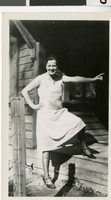
Photograph of Alta Beckley, circa mid 1900s
Date
1930 to 1969
Archival Collection
Description
Alta Beckley. No date or location given.
Image

Photograph of Seely Cragin, circa mid 1900s
Date
1930 to 1969
Archival Collection
Description
Seely Cragin. No date or location given.
Image
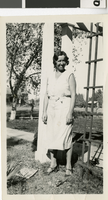
Photograph of Hallie Dimmoch, circa mid 1900s
Date
1930 to 1969
Archival Collection
Description
Hallie Dimmoch. No date or location given.
Image
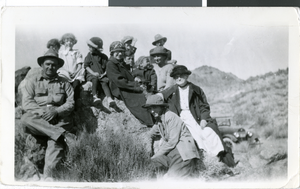
Photograph of people in the desert, circa early 1900s
Date
1920 to 1949
Archival Collection
Description
A group photograph in the desert. Handwritten identification inscribed on back of photograph: "[Rawhine?] Mosbach; Charlotte Mosbach; Margie; Leon, Jr.; Gil Mosbach; Roy Mosbach; Mother Rockwell; Mother Banfield; Bessie."
Image
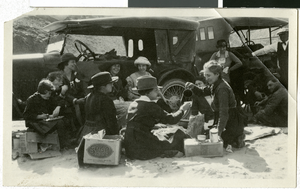
Photograph of people picnicking, circa early 1900s
Date
1920 to 1949
Archival Collection
Description
Handwritten inscription given with photograph: "Picnic on the desert. Grandmother Rockwell on the right pouring coffee."
Image

Photograph of people picnicking, circa early 1900s
Date
1920 to 1949
Archival Collection
Description
People picnicking in the desert. Handwritten inscription given with photograph: "Aunt Alma, Earl, Mother, Floyd, Bessie, [Alley?] Lawson."
Image
Pagination
Refine my results
Content Type
Creator or Contributor
Subject
Archival Collection
Digital Project
Resource Type
Material Type
Place
Language
Records Classification
